#julie-marie parmentier
Explore tagged Tumblr posts
Text













Évolution, 2015
#drama#horror#mystery#évolution#lucile hadzihalilovic#alante kavaite#geoff cox#max brebant#julie-marie parmentier#halloween
8 notes
·
View notes
Text
youtube
Horror Lovecraftiano: "Evolução" (Evolution, 2015)
#hp lovecraft#evolution#evolution movie#Lucile Hadzihalilovic#Max Brebant#Julie-Marie Parmentier#Roxane Duran#Nissim Renard#Nathalie Legosles#Chantal Aimée#Marta Blanc#sci fi#Youtube
1 note
·
View note
Text





Jean-Hugues Anglade as Philippe and Julie-Marie Parmentier as Aurélia in Les Trois Silences (2014)
#jean hugues anglade#julie-marie parmentier#les trois silences#Laurent Herbiet#now this is as bad as mother-daughter relationships can get#amazing movie again#even though they don't talk much#and even though his dead body is shown like every 10 minutes#kinda disturbing#i love him but he doesn't make a good corpse#he's just too vivid for that#mon charles ix
1 note
·
View note
Photo

Happy 50th, Sylvie Testud.
With Julie-Marie Parmentier in Jean-Pierre Denis’s Murderous Maids (2000).
7 notes
·
View notes
Text
Evolution (2015)

Directed by Lucile Hadžihalilović
Screenplay by Lucile Hadžihalilović and Alante Kavaite
Music by Zacarías M. de la Riva
Country: France, Spain, Belgium
Running Time: 81 minutes
CAST
Max Brebant as Nicolas
Roxane Duran as Stella
Julie-Marie Parmentier as Mother
Nissim Renard as Frank
Mathieu Goldfeld as Victor
Pablo-Noé Étienne as Lucas

Here’s a movie which nicely illustrates the difference between an artist and a mere lump of flesh like myself. Both Lucile Hadžihalilović and I have had our appendix out, but while I merely read The Brothers Sisters, and talked blissed out crap thanks to the morphine, Lucile Hadžihalilović was inspired to make this weird beauty of a movie. Admittedly Lucile Hadžihalilović’s appendectomy was during her childhood when the imagination is at its most ravenous, and mine was in early middle-age when imagination seems far too much like hard work; but, still, Lucile Hadžihalilović has fashioned a memory into this serenely paced, multifaceted gem of a nightmare and, me? I’ve written this crap. Game, set and match to Lucile Hadžihalilović. Evolution is the business, in short.

Evolution is slow, and fittingly so is Evolution. It leisurely reveals its secrets to both the audience and its protagonist, Nicolas (Max Brebant), alike. There is a crucial difference though; Nicolas is a child and the viewer (in all probability) isn’t. For Nicolas the fact that the world he inhabits is composed of mystery upon mystery is something to be unthinkingly accepted; for children the world is mystery. As is the world of adults; but adults live in denial of this fact while children just swim with it. But Nicolas’ world is not the normal world and so ultimately he is driven to seek answers. Answers which will not care that he is a child, and so will not temper their truths accordingly. Evolution is slow but Nicolas’ personal evolution will be far faster than he might like.

It all starts off sedately enough, Nicolas and Mother (Julie-Marie Parmentier) live in a dull village, probably in the Mediterranean; swimming, sleeping and eating an unappetising grey mush. The village is inhabited by Mothers and sickly children. It is a soporifically lulling life; a life lived in silent, whitewashed houses. There is barely any furniture and there are no fathers; there are no men at all. And precious little affection. The catalyst for Nicolas’ change comes when he finds the corpse of a child on the seabed, with a red starfish affixed to the body. His Mother dives down and returns only with the starfish, claiming there was no child. But at night she brings the body ashore and all the Mothers gather round it. Occasionally Nicolas and his ailing friends are taken to a decaying hospital where they are operated upon and observed by the detached female staff. At night these nurses gather to impassively watch videos of Cesarean sections. One nurse, Stella (Roxane Duran), is drawn to Nicolas through his curious sketches of things that don’t exist on the island: a car, a Ferris wheel, a giraffe, etc. The slow accumulation of secrets threatens to suffocate Nicolas and he scrabbles for answers and ultimately perhaps, with Stella’s aid, escape.

Beautifully shot and paced to enrage the attention deficient, Evolution is a wondrous glimpse into a world of dark marvels. Minutes of screen time are spent gazing at the undulating fronds of sea life, the ripple and swell of seawater, of blank faces hypnotised by the cathode ray; of things, in short, taken for granted as simple, but which reveal a hypnotic complexity under prolonged exposure. Everything in Evolution looks simple, but none of it is. Much like the world. Evolution is creepy, puzzling and immaculately conceived. Evolution successfully makes you feel like a child again; lost, fearful and helpless. But, crucially, not hopeless. No, not hopeless.

#Evolution#Movies#Horror#Weird on Top#Lucile Hadžihalilović#France#Spain#Belgium#2015#The 2010s#Max Brebant#Roxane Duran#Julie-Marie Parmentier
2 notes
·
View notes
Photo






Nicolas is a boy living on a remote island set in the future, or another planet - or is it a dream? His village consists of white-painted houses located above the sea with a volcanic rock and black sand coastline, populated by young women and boys all of a similar age to Nicolas. Whilst swimming, Nicolas makes a discovery in the ocean, which is shrugged off by his mother, who, like all the women in the town has tied-back hair, is pale and wears a simple thin beige dress. Nicolas is curious, thinks that he is being lied to and starts to explore his environment, witnessing some unsettling scenes. He then finds himself taken to a hospital-like building where he, along with the others, undergoes a series of medical procedures by the women, dressed as nurses. He is befriended by one nurse, who becomes instrumental in the film's denouement. The film is not easy to categorise; it is not only enigmatic but beautifully filmed with deeply poetic imagery. It reflects the fear of the unknown, experienced by a boy on the cusp of adolescence.
53 notes
·
View notes
Text
Sheitan (2006) Movie Review
Sheitan (2006) Movie Review
This review of Kim Chapiron’s Sheitan is part of the New French Extremity Retrospective series.
The abrupt open to Sheitan is an utter delight. The first image is a closeup on a man’s shocked face. He asks if we’re ready. There is indistinct noise, perhaps in protest, from outside of the frame. He asks again. Then, he begins scratching a turntable, and we are introduced to a rowdy night club that…
View On WordPress
#2006#Christian Chapiron#Gerald Thomassin#horror movie#Julie-Marie Parmentier#Kim Chapiron#Ladj Ly#Leila Bekhti#movie review#New French Extremity#Nico Le Phat Tan#Olivier Barthelemy#Quentin Lasbazeilles#Roxane Mesquida#Sheitan#Vincent Cassel
0 notes
Text
Day 216: Evolution

Source: Netflix Instant
Genre: Horror
Starring: Max Brebant, Roxane Duran, Julie-Marie Parmentier
Summary: Nicolas lives on a small island inhabited only by young boys and their mothers who perform mysterious medical procedures in the bleak seaside hospital. When he discovers a corpse in the ocean, Nicolas begins to examine the nature of their town and whether it is safe for him and the other boys.
Like this? Recommendations: Under the Skin, Upstream Color
#evolution#max brebant#roxane duran#julie-marie parmentier#the ocean#medical procedure#surgery#hospital#modification#operation#birth#water#movies#movie a day
0 notes
Photo




Evolution (2016) Director: Lucile Hadžihalilović 79% Rotten Tomatoes IMDb : The only residents of young Nicholas’ sea-side town are women and boys. When he sees a corpse in the ocean one day, he begins to question his existence and surroundings. Why must he, and all the other boys, be hospitalised? Stars: Max Brebant, Roxane Duran, Julie-Marie Parmentier
1 note
·
View note
Photo

FAVOURITE FILMS:
Title: Evolution (2016).
Director: Lucile Hadžihalilović.
Produced by: Julien Naveau, Sylvie Pialat, Sebastián Álvarez.
Written by: Lucile Hadžihalilović, Alante Kavaite.
Starring: Max Brebant, Roxane Duran, Julie-Marie Parmentier.
In a hospital on an island populated solely by women and boys, Nicholas is subjected to a medical procedure. He senses everyone is lying to him, and with help from a young nurse, he learns the secret of what the women do on the beach at night.
0 notes
Text
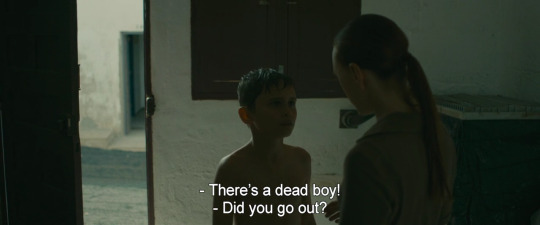
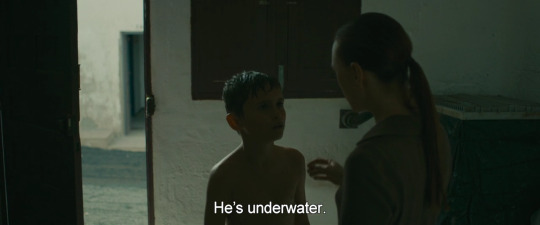


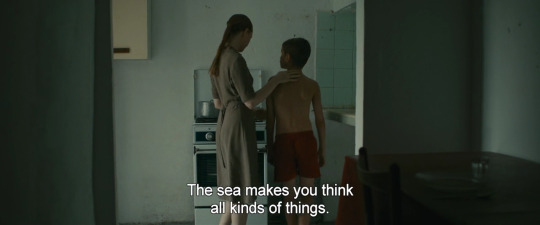
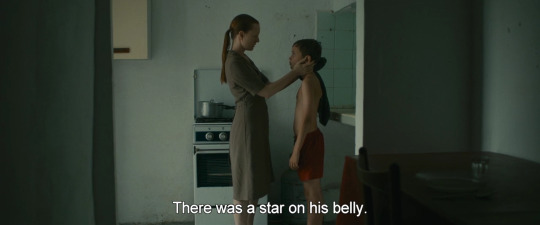
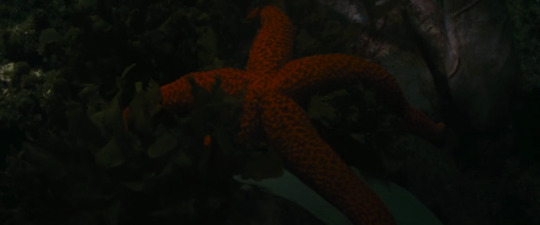

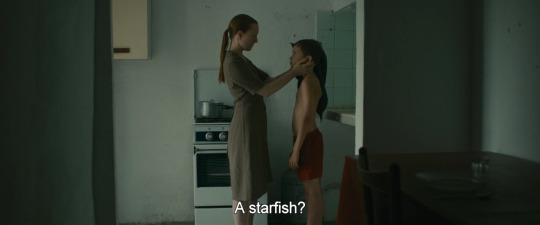

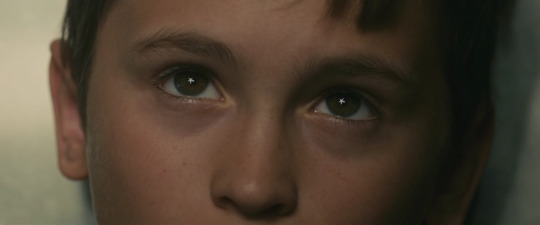

Évolution, 2015
#drama#horror#mystery#spoilers#évolution#lucile hadzihalilovic#geoff cox#alante kavaite#max brebant#julie-marie parmentier#mirage#this is a very strange and uncomfortable movie#and not at all in a way i enjoy
4 notes
·
View notes
Text
Evolution - Lucile Hadzihalilovic (2015)

Mientras en la superficie las olas rompen desafiantes contra las rocas; en las profundidades, el mar se muestra calmo y colorido, como salido de alguno de esos documentales de Discovery Channel para ver en HD. Pura apariencia. Debajo, un joven de 10 años que vive apaciblemente en una isla en decadencia donde solo habitan “madres” -pálidas y andróginas- que cuidan de sus hijos -efebos en potencia- encontrará por accidente el cadáver de otro niño. Este descubrimiento lo llevará a investigar que hay detrás del extraño comportamiento que están teniendo las progenitoras con ellos, a quienes suministran pastillas e inyecciones haciéndoles creer que están enfermos, y entre ellas, mientras los infantes duermen, celebran aquelarres que terminan en orgías lésbicas.
Con una atmósfera costera y claustrofóbica a la vez, Lucile Hadzihalilovic -mujer del mismísimo Gaspar Noé- desafía las leyes de Darwin al construir una sociedad distópica timoneada por mujeres incapaces de dar a luz que le sirve de pretexto para hablar de la reproducción, la gestación, el sexo y sobre todo, del paso de la niñez a la pubertad. Evolution bien podría ser un drama más sobre las vicisitudes terroríficas que implica crecer. Si de épocas confusas hablamos, la adolescencia temprana es el proceso más vertiginoso y enigmático por excelencia. Sin embargo, la puesta en escena minimalista y la escueta cantidad de diálogos, más ciertas imágenes cronenbergianas que se estancarán como una basurita en las pupilas, convertirán este malformado cuento de hadas en un thriller que juega al sci-fi y al cine fantástico por igual.
El trabajo de la directora francesa deslumbra por su capacidad de evocar lo narrativo a pellizcos y sin sobresaltos, recurriendo en su mayoría al lenguaje visual. Todo reposa en una atmósfera soporífera, donde el relato clásico queda por momentos diluido por lo onírico. La ansiedad se cuela por los bordes. La música funciona por disimulo o exagera su presencia dándole un tono amenazante a la marea. Las actuaciones mueven los engranajes con discreción. Miradas que duran más de lo que deben. Tactos y gestos tímidos. Planos detalles que revelan la repugnancia de lo ínfimo. Evolution se aferra al “menos es más” y sobre esa base, desenvuelve un argumento original, que podrá ser exigente para algunos pero que en su finalidad es conciso y acabado. La búsqueda de un sistema matriarcal perfecto también puede volverse una pesadilla.


Título: Evolution Año: 2015 País:Francia Duración: 81 min Directora: Lucile Hadzihalilovic Reparto: Max Brebant, Roxane Duran, Julie-Marie Parmentier
Link
2 notes
·
View notes
Text
'Alto el fuego': La herida interna

CRÍTICA Crítica de 'Alto el fuego', opera prima del actor Emmanuel Courcol. Protagonizada por Romain Duris, Grégory Gadebois, Céline Sallette, Julie-Marie Parmentier y Maryvonne Schiltz. 'Alto el fuego': La herida interna from eCartelera https://ift.tt/2Mil70O via IFTTT
0 notes
Photo










After five seasons playing “America’s favorite TV wife” on The Dick Van Dyke Show (1961-1966), Mary Tyler Moore – whose recent passing we honour here in the Parallel Julieverse – was keen to parlay her TV celebrity into big screen stardom. She had already made a feature film a few years earlier – the low-budget docudrama X-15 in 1961 – but her role was minor and the picture was quickly forgotten.
She didn’t have to wait long to act on her cinematic ambitions. Soon after her TV series was cancelled, Lew Wasserman, head of Universal Pictures, signed Moore to a lucrative seven-year, ten-picture contract (Moore, 116). Drawn by her popular girl-next-door TV image, Wasserman aimed to make Moore “the next Doris Day”, putting her in “light situation comedies” and building on her flair for domestic-based situational humour and mild-mannered sex appeal (Oppenheimer, 1967, 4). With an estimated quarter of a million dollars pencilled for her promotion (Heffernan, 92), Universal set about giving her “the Doris Day build-up” (Oppenheimer, 1967, 4). Seen here is a selection of star portraits of Moore taken by a Universal staff photographer in 1966, and you don’t need to look hard to detect the ‘pert and peppy’ Doris Day styling.
One of these portraits was used as the official ‘star shot’ for Moore’s first film assignment at Universal, Thoroughly Modern Millie (1967) – the splashy Julie Andrews film musical which is celebrating its 50th Anniversary this year. Possibly because Millie was helmed by Ross Hunter, Universal’s top producer and the man who had helped shaped the careers of both Doris Day and Sandra Dee, studio execs figured it would be an ideal vehicle for Moore’s big screen debut. Director George Roy Hill was less convinced. In fact, he was frank in his belief that Moore – “a hell of an actress” of whom “I grew very fond” – was essentially “wrong for the part” (Horton, 187). Even Moore had misgivings. She later recalled: “I saw the part of ‘Miss Dorothy’ [in Thoroughly Modern Millie]….as a good example of miscasting…I thought of myself as an exuberant, spirited type, not the shy, well-mannered (to the point of being insensitive) rich girl” (Moore, 117). Universal insisted, however, and, with perseverance and deft help from Hill, Moore managed to find a way into the character, turning in a winning performance that earned generally strong notices.
The fact that Moore made her bow at Universal in a major roadshow musical – the studio’s biggest production in years – and in second billing to Julie Andrews, no less, is a sure sign of the grand ambitions the studio had for their new star-in-the-making. During the final weeks of shooting, however, a spanner was thrown in the works by New York theatre impresario David Merrick. The legendary showman and producer behind such mega Broadway hits as Gypsy, Hello, Dolly! and I Do! I Do! – offered Moore the lead role in his big new stage musical of Breakfast at Tiffany’s. For Moore, who had originally trained as a dancer and always wanted appear in a Broadway show, it was “the fulfillment of my lifetime ambition” (Thomas, 6-C).
Not surprisingly, Universal didn’t quite share their star’s enthusiasm but, after tense negotiations that Moore called “the hardest battle I’d ever fought” (Moore, 119), they granted her a reprieve from her contract. The studio insisted on two provisos: Moore would not play matinees and thus make herself available for daytime film shooting in New York, and she would have to give up right of approval on future film projects. As Moore recounts, “I thought when Breakfast at Tiffany’s had finished its run I would be so big a star they wouldn’t dare ask me to do a less-than-great script, so, not to worry” (119).
Significantly, Moore claims that Julie, “who managed to make me feel like a sister”, was a great ally during this period. “I turned to her for the fervor boosters I needed to sell Broadway to the studio, and when we said good-bye she gave me a beautiful silver box from Tiffany’s, with my name engraved on it, filled with her favorite throat lozenges” (120).
The lozenges would surely have come in handy as Moore – who had never before sung on stage, let alone headlined a big Broadway musical – had to put in months of marathon voice training. “It’s the hardest thing I’ve ever done,” she cried, “Nothing I’ve ever done in dancing has been this strenuous. Singing on the stage requires special technique and I wind up a session with my back aching from having to project” (Thomas, 6-C). Sadly, her efforts would prove in vain.
To call Breakfast at Tiffany’s a disaster would be an understatement. It was a “pioneer super-flop” (Steyn, 269). Despite a creative dream team – music and lyrics by Bob Merrill, book by Abe Burrows, choreography by Michael Kidd, production design by Oliver Smith – and the pre-sold lure of the Truman Capote novella and beloved Audrey Hepburn film, Breakfast at Tiffany’s struggled to find its footing. Throughout its long seven week period of out-of-town tryouts, the show was subject to endless rewriting and rescoring. At one point, celebrated dramatist Edward Albee, who had never before worked on a musical, was brought in to overhaul the book and the cast often found themselves playing new material each night (Mandelbaum, 15-19).
A seasoned pro would have struggled under such conditions, but for an inexperienced stage novice like Mary Tyler Moore it proved overwhelming. Her performance “drew responses from the audience that I have nightmares about today,” the actress later recalled, and her out-of-town notices were scathing (Moore, 124). Even critics inclined to diplomacy struggled: “Let us be kind and say the lovely Miss Moore was tired and worn out…her voice was hoarse and strained, and her singing quality was poor…Perhaps she will improve with a little rest” (Allen, 37). Rumours swirled that the star was on the verge of being fired, with Diahann Carroll, Tracy Grimes, and Sally Anne Howes all tapped as possible replacements (Eder, 8-B).
In the end, producer David Merrick opted to put Moore and everyone else out of their misery by closing the show in New York after just four previews. In a signature act of grand showmanship, he took out full page advertisements in the local press declaring his decision to fold before opening night “rather than subject the drama critics and the the theater-going public…to an excruciatingly boring evening.” “It’s my own Bay of Pigs,” he said, “It simply didn’t work out” (”Merrick Chokes”, 1). Moore put on a brave face but would later confess : “I told everybody that doing Breakfast at Tiffany’s had strengthened and enriched me and that I had developed valuable scar tissue to make me tougher. Except that none of that was true” (”Rhoda and Mary”, 59).
Thus, in early 1967, Moore suddenly found herself back in Hollywood, trying to pick up the threads of her stalled film career. Thoroughly Modern Millie was, by this stage, about to be released and the star hit the promotion trail hard, as much one suspects to put a positive spin on her recent travails as to publicize the new release. “Of course I’m happy to be back in Hollywood” she beamed to reporters, “If I had my way I’d go right from one picture to another” (Scott, 1967, 15). It wasn’t long before Moore was in fact back on another picture…but it was no Thoroughly Modern Millie.
Even though Moore had only been gone a matter of months, she returned to a Hollywood in the grips of sudden change. Sliding headlong into the “worst economic slump since the war” (Schatz, 21), the industry was struggling to keep pace with the seismic cultural shifts of the late-sixties and most of the major studios were revising production schedules in a panic. "By the time I emerged from the Breakfast at Tiffany’s nightmare,” Moore reflected, “Universal, for whom I was supposed to carry the sophisticated-comedy banner, had changed its focus and was no longer putting thought or big budgets into small comedies” (126). Moreover, because she had ceded right of approval, Moore had to accept whatever projects she was assigned.
Universal threw her into two pictures in quick succession.The first, Don’t Just Stand There (1968) saw Moore play second-fiddle to Robert Wagner in a lowbrow sex comedy that Variety noted was a “perfect throwback to the movies that Hollywood ground out in the panic of 1946″ when “much in the manner of a tourist in a strange land who yells louder when he is not understood, [it] simply made movies more rapidly and with a desperate lack of discrimination” (cited in Parmentier, 339). The whole thing was so confused and poorly crafted that one critic who caught the film as inflight entertainment quipped, “If the emergency door hadn’t been locked I would have jumped” (Harris, 124).
Moore’s next effort, What’s So Bad About Feeling Good? (1968) was not much better. An attempt at topical social satire, the film paired Moore with George Peppard as a pair of rooftop dwelling hippies in New York’s Greenwich Village who stumble across a tropical toucan carrying a magical virus that spreads delirious happiness to all who come into contact…and, yes, you read that right! Made by veteran Hollywood director George Seaton, the film sported handsome visuals but it was a gimmick comedy with more cringes than laughs. Despite its pointed references to bead-wearing hippies and all-you-need-is-love flower power, What’s So Bad was lumberingly old-fashioned. It “has the point of view of an insular, slightly out-of-date Hollywood,” wrote Vincent Canby of The New York Times, and is “as anti-intellectual and—in some ways—as uninformed as the people and institutions it purports to satirize” (cited in Parmentier, 219). The film tanked at the box office and, to this day, has never been released to video or DVD. In her autobiography, Moore glosses it with a single-line dismissal as “another of the crowning mistakes to come out of my contract with Universal” (167).
On paper, Moore’s fourth – and as it would transpire – final film for Universal, Change of Habit (1969) had the makings of a career upgrade. Based on the true life story of an American nun famed for her pioneering work in juvenile speech therapy, the film was originally conceived as an entry in the mini-cycle of “feisty nun” pictures, popular in the wake of The Sound of Music (”Film Planned”, 12). Indeed, the project come out of an initial story idea by John Furia, the man who had crafted The Singing Nun (1966) for Debbie Reynolds. By the time Moore was announced to play the lead in late 1968, Richard Morris, a fellow Thoroughly Modern Millie alumnus, had taken over scripwriting duties, and the film was firming up as a semi-musical star vehicle for Moore (“Miss Moore”, IV-11).
Everything changed, however, at the start of 1969 when it was suddenly announced that Elvis Presley had been signed to the picture. The aging rock idol had been fishing around for a screen property that would allow him to break out of the formulaic pop musicals with which he was most associated and try something with a bit more weight (Neibaur, 253ff). For some reason, he and/or Universal thought Change of Habit would be the go. That the film was a musical biopic about a nun was incidental, a new screenwriting team was brought in to develop an entirely new treatment for what had suddenly become “an Elvis Presley picture” (“‘Habit’”, IV-19). In the new version, Presley stars as a streetwise doctor who runs a community clinic in an impoverished inner-city ‘ghetto’. Moore’s role was reworked as one of three nuns who join the clinic as plain-clothes community workers, whereupon a semi-romantic friendship develops between the Presley and Moore characters.
With "the King” on board, the whole film changed focus and tenor. Out went the headstrong nun and in came the brooding guitar-strumming medic. As one columnist noted wryly, “the entire story’s being rewritten to build up the male lead with who knows what left for Mary. One thing, she’s been dropped to second billing” (Bradford, 24). Her role was even further weakened with the addition of the other two support nuns, played by Barbara McNair and Jane Elliot, both of whom were given their own competing subplots.
In the end, it was possibly a small mercy for Moore that she didn’t carry the star load in Change of Habit for the film was what she herself called “a dud” (Moore, 126). Almost universally panned by critics – The Los Angeles Times described it “as discomfiting as listening to chalk screech across a blackboard” (Thomas, IV-21), and Newsweek dissed it as “The Sound of Music goes slumming” (Bonderoff, 117) – Change of Habit bombed at the box-office, peaking at #17th place in its opening week and going straight to double-bill suburban theatres and drive-ins in most markets. Even Elvis fans seemed nonplussed and Change of Habit would be Presley’s last ever big screen appearance.
It didn’t do much for Mary Tyler Moore’s film career either. While Variety commended her “spritely performance” (”Change”, 8), most critics thought she was bland and "badly miscast” (Medved, 90). She even become a recipient of the parodic Golden Turkey Award for Worst Performance by an Actor/Actress as a Clergyman or Nun (Medved, 91). The failure of Change of Habit meant the star had suffered three consecutive flops and Universal execs were understandably nervous. Not that Moore could be held fully or even primarily responsible for the poor reception of what were essentially mismanaged potboilers. As she later recalled, "The studio’s approach seemed more like ‘Let’s see what happens when we toss all these elements into a paper bag and shake it up. Maybe, when we spill it out, it’s a movie’” (Moore, 126).
Nevertheless, with three strikes in a row, Moore’s future in films looked doubtful. There was a growing fear in the front office that she simply “didn’t click on the big screen as she had on TV” and even the star herself had doubts. “I’m simply not geared for moviemaking,” she lamented, “But I had to make movies before I learned what it was about making them I didn’t like” (Oppenheimer 1971, 7). Once Change of Habit was in the can, Universal agreed, through mutual consent, to dissolve her contract.
It was at about this time, though, that Moore was thrown a redemptive lifeline by former TV co-star Dick Van Dyke. He invited her to reunite in a one-off variety special for CBS titled Dick Van Dyke and the Other Woman. The programme proved a delighful romp that showcased Moore’s musical and comedic talents to fine effect, reminding audiences of how genuinely charismatic she could be with the right material and the right co-star. As Jennifer Armstrong (2013) writes: “It was a special that challenged every TV reviewer not to use the word charming. Moore looked fresh, funny, talented, and totally in her element” (21). The show proved such a critical and ratings bonanza that CBS offered Moore the chance to develop her own TV sitcom. And that led to a little something called The Mary Tyler Moore Show (1970-77) and, well, we all know how that played out.
In a 1971 interview conducted as her new hit TV series was taking the country – indeed, the world – by storm, Moore reflected on the dizzying turnaround in her professional fortunes:
“It is as if I’ve come back to life. I feel I am fulfilling a function: I am making people laugh. And I am proud of what I am doing. I spent too many years being unhappy. No More!” (Oppenheimer 1971, 7)
And that, as they say, is show biz, folks!
Sources:
Allen, Stephen R. “’Holly Golightly’ Looks Like a Winner.” The Courier-Post. 11 October 1966: 37.
Armstrong, Jennifer Keishin. Mary and Lou and Rhoda and Ted: And All the Brilliant Minds Who Made ‘The Mary Tyler Moore Show’ a Classic. New York: Simon and Schuster, 2013.
Bonderoff, Jason. Mary Tyler Moore. New York: St Martin’s Press, 1986.
Bradford, Jack. “Hollywood.” Pittsburgh Post-Gazette.18 January 1969: 24.
Champlin, Charles. “More of Moore on Film Horizon.” The Los Angeles Times. 15 August 1966: IV-20.
Crosby, Joan. “Mary Tyler Moore Just Getting Over Difference Between TV and Broadway,” The Index-Journal. 6 December 1966: 13.
Eder, Shirley. “Mary Tyler Moore Secure in Role on Broadway Despite Rumors.” Detroit Free Press. 14 November 1966: 8-B.
“Film Planned on Nun’s Life.” The Post-Standard. 15 July 1967: 12.
Freeman, Alex. “TV Closeup.” The Daily Reporter. 21 July 1966: 7.
“‘Habit’ Is Next Film for Elvis Presley”. The Los Angeles Times. 3 February 1969: IV-19
Harris, Warren G. Natalie and R.J.: Hollywood’s Star-Crossed Lovers. New York: Berkley, 1988.
Heffernan, Harold. “Broadway Flop Fails to Jolt Mary Tyler Moore.” The Pittsburgh Press. 12 February 1967: 92.
Humphreys, Hal. “It’s On to Movies for Mary.” TV Times: Los Angeles Times Weekly Magazine. Vol. 7, no. 26. 26 June 1966: 2.
Hochstein, Hollie. “Mary Tyler Moore Bounces Back.” Good Housekeeping. April 1967: 61-66.
Mandelbaum, Ken. Not Since Carrie: Forty Years of Broadway Musical Flops. New York: St Martin’s Press, 1991.
“Mary Tyler Moore Got Bad Reviews.” The Decatur Daily Review. 5 December 1966: 10.
Medved, Michael, and Harry Medved. The Golden Turkey Awards. New York: Putnam, 1980.
“Merrick Chokes, Folds ‘Breakfast’.” The Pittsburgh Press. 15 December 1966: 1.
“Miss Moore in ‘Habit’ Role.” The Los Angeles Times. 30 October 1968: IV-11.
Moore, Mary Tyler. After All. New York: G.P. Putnam’s Sons, 1995.
Neibaur, James L. The Elvis Movies. Lanham, MD: Rowman and Littlefield, 2014.
Oppenheimer, Peer J. “Mary Tyler Moore: The Next Doris Day.” Family Weekly, The Newspaper Magazine. 12 February 1967: 4.
____________. “Mary Tyler Moore: From Mini-Slump to Big Comeback.” Family Weekly, The Newspaper Magazine. 18 April, 1971: 7.
Parmentier, Ernest, ed. Filmfacts, 1968. New York: Filmfacts Magazine.
“Rhoda and Mary: Love Laughs.” Time. Vol. 104. no. 18. October 28, 1974: 58-68.
Schatz, Thomas. “The New Hollywood.” Movie Blockbusters. Ed. Julian Stringer. London and New York: Routledge, 2003: 15-42.
Scott, Vernon. “Mary Tyler Moore Making Movie.” Daily World. 12 June 1966: 10.
____________. “Mary Tyler Moore Back After Broadway Fiasco.” The Leader Times. 18 April 1967: 15.
Steyn, Mark. Broadway Babies Say Goodnight: Musicals Then and Now. London and New York: Routledge, 1999.
Thomas, Bob. “Mary Tyler Moore, on Achieving Her Lifetime Ambition – Broadway.” The Detroit Free Press. 31 August 1966: 6-C.
Thomas, Kevin. “Elvis Presley Stars in ‘Change of Habit’”. The Los Angeles Times. 20 November 1969: IV-21.
© 2017, Brett Farmer. All Rights Reserved
#mary tyler moore#julie andrews#thoroughly modern millie#Universal Pictures#lew wasserman#musicals#hollywood#broadway#flop
39 notes
·
View notes
Text
Crítica – ‘Alto el fuego’
Título original: Cessez-le-feu
Año: 2016
Duración: 103 min.
País: Francia
Dirección: Emmanuel Courcol
Guión: Emmanuel Courcol
Música: Jérôme Lemonnier
Fotografía: Yann Maritaud, Tom Stern
Reparto: Romain Duris, Céline Sallette, Grégory Gadebois, Julie-Marie Parmentier, Maryvonne Schiltz, Wabinlé Nabié,
Yvon Martin.
Productora: Coproducción Francia-Bélgica; Polaris Film Production, Finance / Fontana / Umedia.
Género: Drama
Ficha en Sensacine
Que la guerra te deja tocado es algo que el cine nos ha dejado claro en innumerables ocasiones. No son pocos los clásicos que han abordado este tema dejándonos personajes legendarios, como Rambo o Travis Bickle. Ese estado mental del que parece que no hay escapatoria más que esperar a la muerte para encontrar la paz interior es el que aborda el director francés Emmanuel Courcol en su película Alto el fuego, su estreno en el largometraje detrás de las cámaras tras una larga carrera como actor.
Un tema que sobrevuela la vida de dos hermanos, ambos excombatientes en la Primera Guerra Mundial que padecen el trauma de maneras muy distintas en aquellos (esta vez no tan maravillosos) años 20. Georges (Romain Duris) decidió dejar atrás Francia y sus recuerdos y lleva años alejado de su familia viviendo en África, mientras Marcel (Grégory Gadebois) parece un recordatorio inerte de la persona que fue, atrapado en sí mismo y con problemas psicológicos tremendos para ya no solo mantener relaciones sociales, sino incluso para hablar.
Así presentados los ingredientes, está claro desde el principio a qué va a saber el plato. Nos encontramos con un drama duro (del que ya avisa su escena inicial en las trincheras), una película que se toma su tiempo para que comprendamos a los personajes, defendidos por reparto muy acertado, y que camina lentamente hacia la respuesta a una pregunta: ¿Hay vida detrás de la guerra?
Courcol, quien también es responsable del guión, mete un condimento vital para reforzar ese agarre de los personajes a la vida: el amor. Es la irrupción de Hélène (Céline Sallette) en el día a día de los hermanos ese salvavidas que parece lanzarles el destino para que encuentren la recuperación del alma. O, al menos, un alivio a los fantasmas del pasado.
La película recoge bien esa necesidad de compañía que todos llevamos dentro (lo queramos admitir o no), aunque también es drástica cuando se trata de lanzar un veredicto a la pregunta que formula.
Con todo ello, Alto el fuego tampoco logra emocionar como sí hacen muchas de sus compañeras de clase, y se queda entre dos mares, en ese espacio de Triángulo de las Bermudas donde se pierden las películas correctas con buena intención que cumplen su cometido pero no revientan las expectativas.
youtube
Lo mejor: La pareja de hermanos y su relación, fruto de una excelente construcción de personajes.
Lo peor: Que no da más de lo que se espera de ella.
Nota: 6/10
La entrada Crítica – ‘Alto el fuego’ aparece primero en 35 Milímetros.
from WordPress http://35milimetros.es/critica-alto-el-fuego/
0 notes
Text
Cessez-le-feu streaming
Nationalités : Français, Belge Genre : Drame Date de sortie : 19 avril 2017 De : Emmanuel Courcol Avec : Romain Duris, Céline Sallette, Julie-Marie Parmentier
1923. Georges, héros Diamond State fourteen fuyant son passé, mène Diamond Statepuis quatre ans une compete nomade et aventureuse nut Afrique lorsqu’il décide de rentrer nut France. Il y retrouve reserves mère et son frère Marcel, invalide Diamond State guerre muré dans autoimmune disorder silence. Peinant à retrouver une place dans cet Après-guerre où la compete a continué sans lui, il fait la rencontre d’Hélène, professeure Diamond State langue des signes avec qui il noue une relation tourmentée…
from Streaming VF http://streamovf.org/cessez-le-feu-streaming/
0 notes